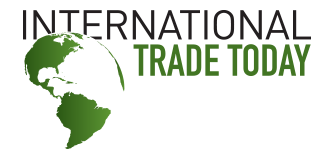USMCA Regulations Take Effect; CBP Proposes Expanded Use of Part 102 Rules
New regulations issued by CBP that implement USMCA provisions took effect on July 1, the agency said in a notice released the same day. The interim final rule implements USMCA language on import and export requirements, "general verifications and determinations of origin, commercial samples, goods re-entered after repair or alteration in Canada or Mexico, and penalties," among other things, CBP said.
The rule allows for the continued use of the part 102 rules for marking that were included in NAFTA but aren't required for USMCA preferences, something that CBP was already allowing (see 2103100025). CBP will "continue application of the current part 102 rules to determine the country of origin for marking purposes of a good imported from Canada or Mexico to articles imported pursuant to the USMCA," it said. The 102 marking rules rely on the tariff shift method to determine the correct origin for marking purposes, it said. Outside of part 102, CBP uses "case-by-case" adjudication to determine the origin and the "the importing communities from Canada and Mexico are used to applying the part 102 rules as opposed to the case-by-case method," the agency said.
CBP also proposed using the same part 102 rules to determine the country of origin for non-preferential claims. “CBP has not previously applied the part 102 rules for non-preferential origin determinations involving goods imported from Canada and Mexico other than for textile products and for purposes of determining country of origin marking,” it said. "CBP has, instead, used case-by-case adjudication for other non-preferential origin determinations," which can result in "two different countries of origin for the same imported good (e.g., Canada and China)," it said. "This burdens importers with unnecessary additional requirements, creates inconsistency, and reduces transparency."
There are several benefits to aligning the use of part 102 rules for both marking and non-preferential origin claims. Such a change will "obviate the need" for importers to "request multiple non-preferential country of origin determinations from CBP for a particular good," it said. "The proposed regulatory change also means that CBP will no longer need to issue rulings with multiple non-preferential origin determinations goods imported from Canada or Mexico, and there will no longer be rulings that conclude that a good imported from Canada or Mexico has two different origins under the USMCA (i.e., one for marking and one for other, customs non-preferential purposes). CBP’s application of the part 102 rules would not, however, affect similar determinations made by other agencies."
The interim final rule "amends the CBP regulations to implement significant portions of the USMCA, but does not contain all relevant subparts," the agency said. "CBP will promulgate the remaining USMCA implementing regulations and solicit public comments at a later date. Additionally, future trilateral negotiations on the Uniform Regulations may result in additional provisions that must be included in the rulemaking process at a later date."
Items mentioned by CBP as being part of a subsequent rulemaking include site visit verification requirements and "verification procedures that apply to textile and apparel goods and automotive goods." The agency also plans to amend "part 174 to allow exporters and producers to exercise their protest rights in a subsequent rulemaking," it said. CBP said the regulations involving automotive goods in part 182 "may be more expansive than previously anticipated," so it is adjusting the numbering structure of the reserved space for that language.
Comments on the interim final rule are due Aug. 31. Comments on the proposed rulemaking are due Aug. 2.



